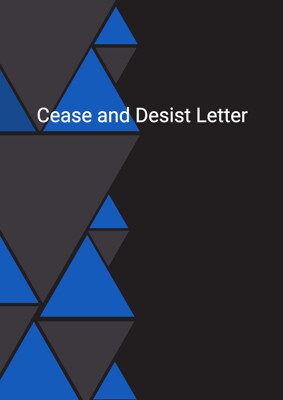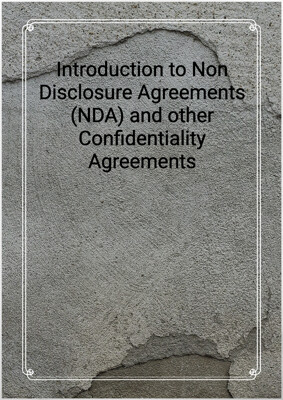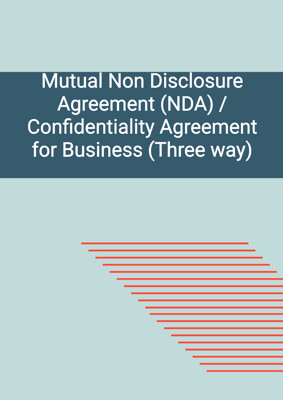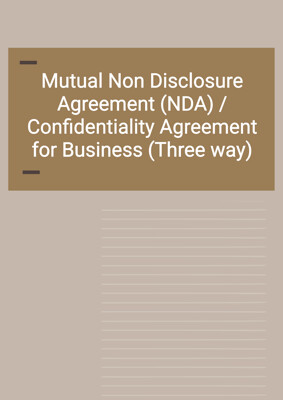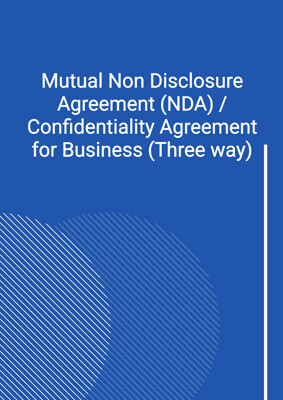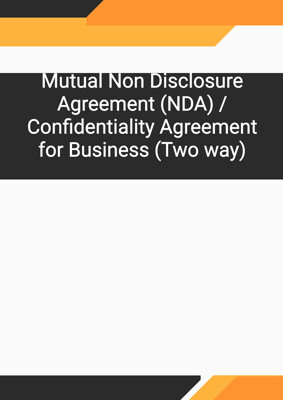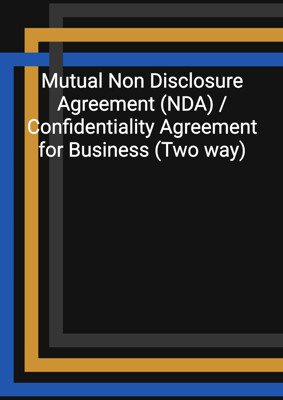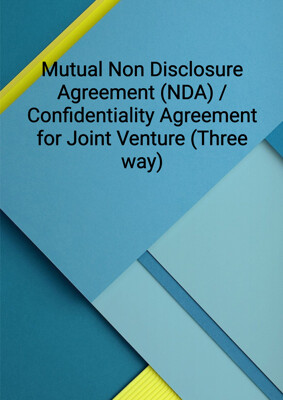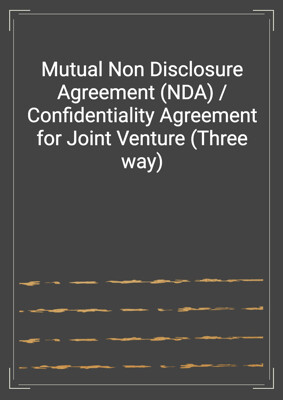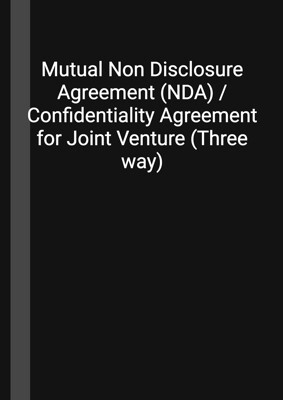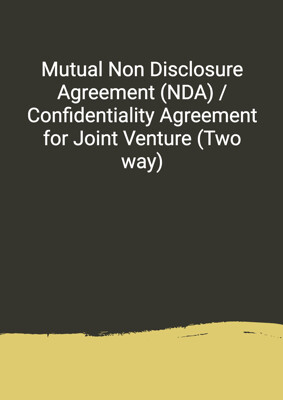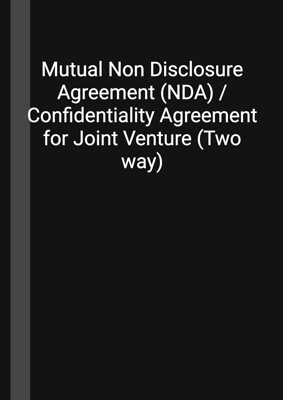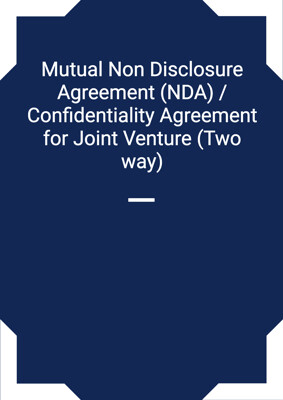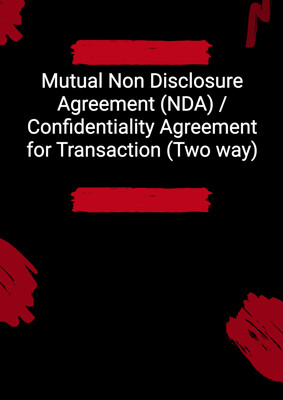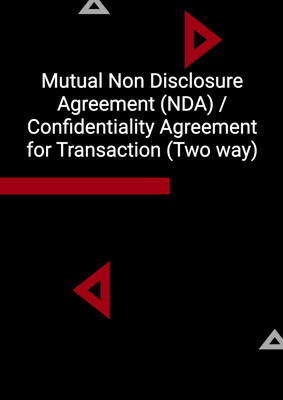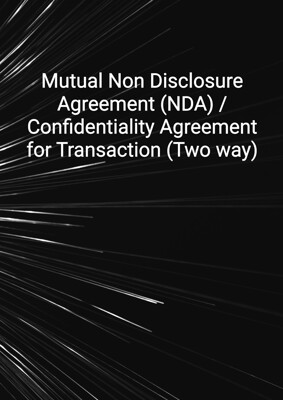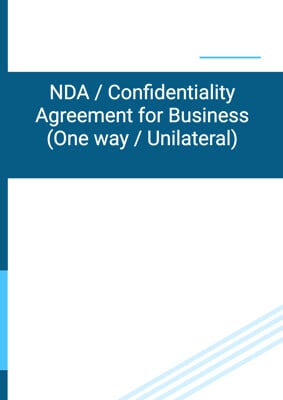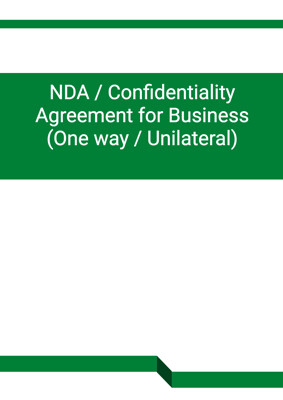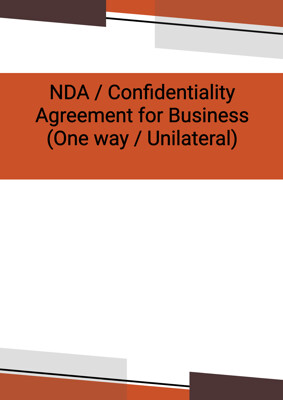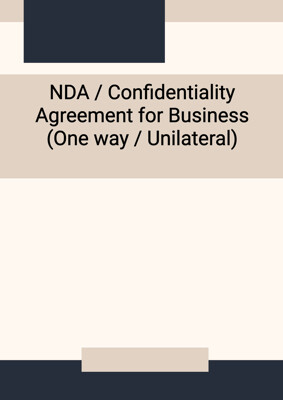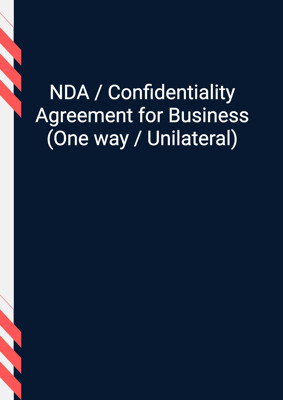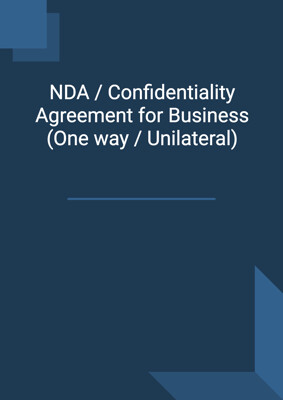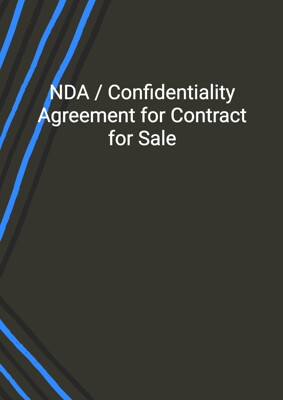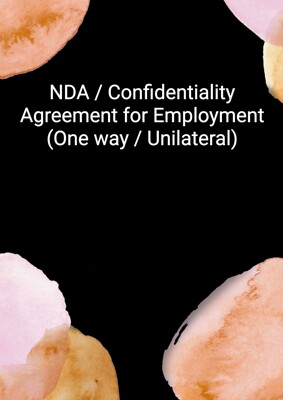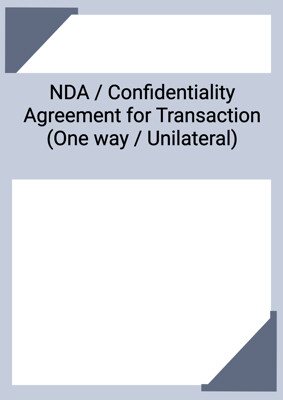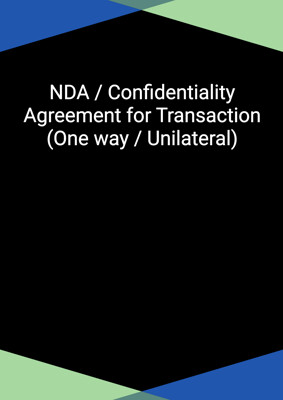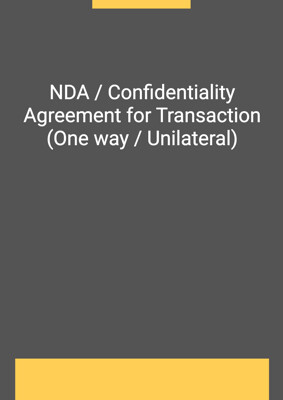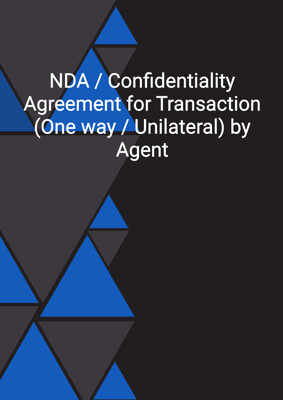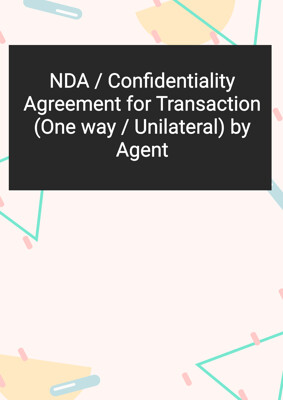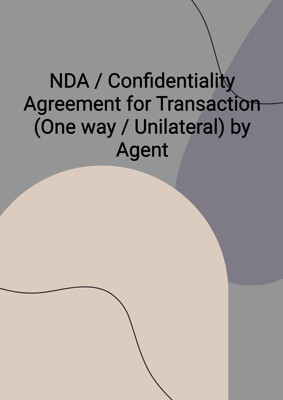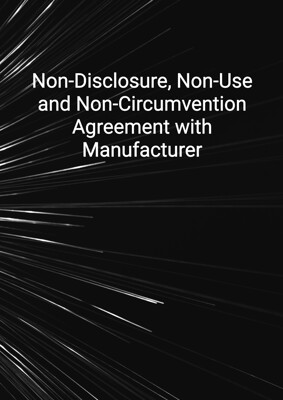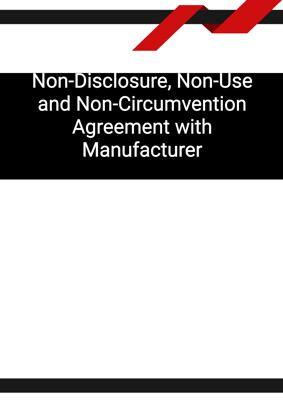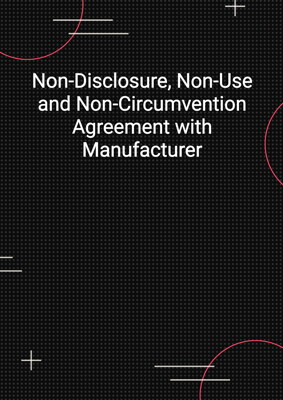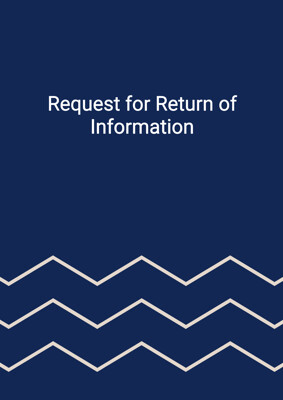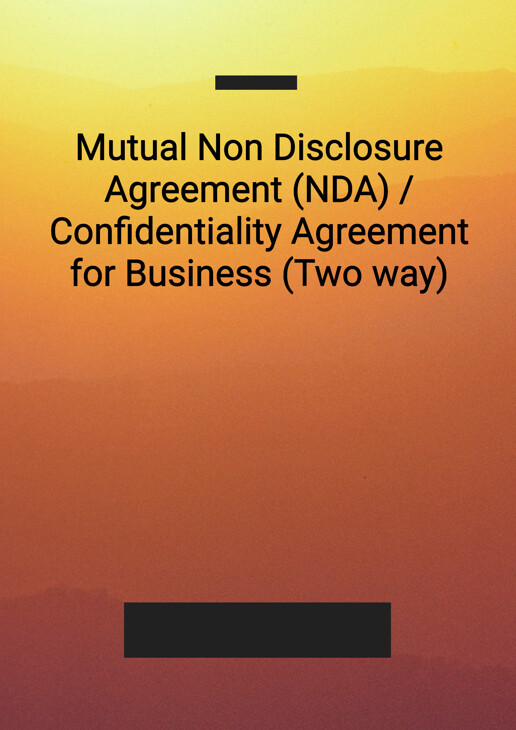
Mutual Non Disclosure Agreement (NDA) / Confidentiality Agreement for Business (Two way)
Loose / Light
Two way Non Disclosure agreement for discussion of business relationship. It imposes a mutual obligation of confidentiality on the parties who provide and receive information at the same time. This form is looser and easier to comply with by the parties.
How to Tailor the Document for Your Need?
01
Create Document
Fill in the details of the parties. You can click the "Fill with Member’s Information" button to complete it with information saved to your account.
02
Fill Information
Please fill in any additional information by following the step-by-step guide on the left hand side of the preview document and click the "Next" button.
03
Get Document
When you are done, click the "Get Document" button and you can download the document in Word or PDF format.
04
Review Document
Please get all parties to review the document carefully and make any final modifications to ensure that the details are correct before signing the document.
Document Preview
Document Description
The Mutual Non Disclosure Agreement (NDA) / Confidentiality Agreement for Business (Two way) is a document that establishes a confidential relationship between two parties, Party 1 and Party 2. The document is important as it protects the confidential information of both parties and ensures that it is not disclosed to any third party without proper authorization.
The entire document is divided into several sections, each serving a specific purpose. The first section is the interpretation section, which defines key terms used throughout the agreement. This section ensures that both parties have a clear understanding of the terms used in the document.
The second section of the document outlines the obligations of confidentiality. It states that each party must maintain the confidentiality of the information exchanged and use it exclusively for the purpose stated in the agreement. This section also prohibits the copying, reproduction, or storage of the information in an externally accessible computer or electronic information retrieval system.
The third section of the document focuses on the confidentiality measures that each party must take to protect the disclosed information. It states that the receiving party must not disclose the information to anyone other than those on a need-to-know basis and must apply adequate security measures to prevent unauthorized access or copying of the information.
The fourth section of the document specifies the exceptions to the confidentiality obligations. It states that the obligations do not apply to information that is already publicly available, previously known to the receiving party, disclosed by a third party, or independently developed by the receiving party.
The fifth section of the document addresses the return of information. It states that each party must return or destroy all documents and materials containing the information upon request, and remove any stored information from computer systems.
The sixth section of the document includes a disclaimer and warranty. It clarifies that the information provided does not guarantee its accuracy, reliability, or completeness. It also states that neither party will have any liability for the use of the information by the other party.
The seventh section of the document addresses the confidentiality of the agreement itself. It states that the existence and nature of the agreement must be kept confidential, and any announcement or circular relating to the agreement requires approval from both parties.
The eighth section of the document outlines the remedies available in case of a breach of the agreement. It states that the disclosing party is entitled to remedies such as injunction and specific performance.
The ninth section of the document addresses waiver. It states that a waiver of a failure to perform any provision of the agreement does not constitute a waiver of any other or further failure.
The tenth section of the document prohibits the assignment of rights or obligations under the agreement.
The eleventh section of the document states that the agreement constitutes the entire agreement between the parties and supersedes any previous agreements or understandings.
The twelfth section of the document clarifies that no license is granted under any intellectual property rights of either party.
The thirteenth section of the document specifies the governing law and jurisdiction.
The fourteenth section of the document addresses notices and service. It states the methods of delivering notices and the addresses of the parties for the purpose of the agreement.
The fifteenth and final section of the document states that no rights under the agreement can be enforced by a third party.
In summary, the Mutual Non Disclosure Agreement (NDA) / Confidentiality Agreement for Business (Two way) is a comprehensive document that establishes a confidential relationship between two parties and outlines their obligations regarding the protection of confidential information.
How to use this document?
1. Enter the names and principal places of business of Party 1 and Party 2 in the agreement. This ensures clear identification of both parties.
2. Specify the confidential information: Clearly define the confidential information that will be exchanged between the parties. This includes discoveries, ideas, concepts, know-how, designs, specifications, and other technical, financial, or commercial information.
3. Obligations of confidentiality: Each party must agree to maintain the confidentiality of the information and use it exclusively for the purpose stated in the agreement. They must not copy, reproduce, or store the information without proper authorization.
4. Confidentiality measures: Both parties must take adequate measures to protect the disclosed information. This includes restricting access to the information and applying security measures to prevent unauthorized disclosure or copying.
5. Exceptions to confidentiality: The obligations of confidentiality do not apply to information that is already publicly available, previously known to the receiving party, disclosed by a third party, or independently developed by the receiving party.
6. Return of information: Upon request, each party must return or destroy all documents and materials containing the information. They must also remove any stored information from computer systems.
7. Disclaimer and warranty: The information provided does not guarantee its accuracy, reliability, or completeness. Neither party will have any liability for the use of the information by the other party.
8. Confidentiality of the agreement: The existence and nature of the agreement must be kept confidential. Any announcement or circular relating to the agreement requires approval from both parties.
9. Remedies: In case of a breach of the agreement, the disclosing party is entitled to remedies such as injunction and specific performance.
10. Waiver: A failure to perform any provision of the agreement does not constitute a waiver of any other or further failure.
11. Assignment: Neither party can assign any rights or obligations under the agreement.
12. Entire agreement: The agreement constitutes the entire agreement between the parties and supersedes any previous agreements or understandings.
13. No license: No rights are granted under any intellectual property rights of either party.
14. Governing law and jurisdiction: The agreement is governed by the specified law and jurisdiction.
15. Notices and service: Notices must be delivered by hand, email, or post according to the specified rules. The addresses of the parties must be provided.
16. No rights under contracts for third parties: Only the parties to the agreement have rights under it, and no third party can enforce its terms.
